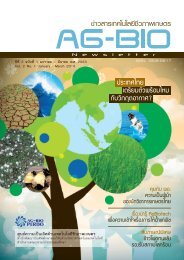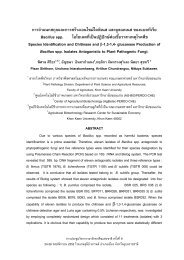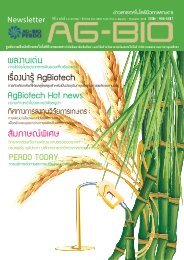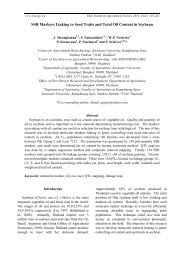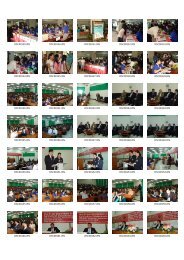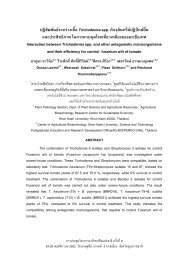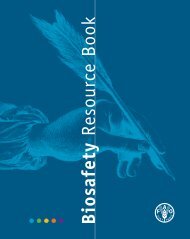Biosafety Manual PDF - Lawrence Berkeley National Laboratory
Biosafety Manual PDF - Lawrence Berkeley National Laboratory
Biosafety Manual PDF - Lawrence Berkeley National Laboratory
You also want an ePaper? Increase the reach of your titles
YUMPU automatically turns print PDFs into web optimized ePapers that Google loves.
<strong>Biosafety</strong> <strong>Manual</strong><br />
IBC-approved version (May 18, 2010)<br />
Requirements and specific practices for constructing and handling recombinant DNA molecules,<br />
and organisms and viruses containing recombinant DNA molecules, are specified in the NIH<br />
Guidelines. APHIS permits may also be required for the importation, interstate movement, or<br />
environmental release of certain genetically engineered organisms that may be plant pests (see<br />
Appendix I of this manual). Recombinant research requires a risk assessment, establishment of<br />
containment levels and controls, and a <strong>Biosafety</strong> Work Authorization (for more information, see<br />
Sections 2.0 to 5.0 of this manual and PUB-3000, Section 26.8).<br />
3.3.6 Animals<br />
Working with animals in research, caring for animals in animal care facilities, or coming in<br />
contact with animals or vectors in the field may cause zoonotic or other diseases. A zoonosis<br />
or zoonose is an infectious disease that can be transmitted (in some instances, by a vector)<br />
from nonhuman animals, both wild and domestic, to humans, or from humans to nonhuman<br />
animals (the latter is sometimes called reverse zoonosis). Human diseases caused by a<br />
noninfectious, etiological agent derived from animals or their vectors are not considered a<br />
zoonosis (e.g., allergic reactions to animal products such as dander or urine). Work involving<br />
animals may expose workers to etiologic agents in a variety of ways such as wound infections,<br />
inhalation of aerosols (e.g., dust from animal bedding), and animal bites or scratches. See Table<br />
6 for examples of zoonotic diseases and other diseases related to animals.<br />
Worker safety, agricultural, and recombinant risks related to working with animals must be<br />
evaluated during the risk assessment, and proper containment measures must be employed.<br />
See the following sections and standards for additional information:<br />
• Sections 3.3.3 and 3.3.5 of this manual discuss agricultural and recombinant risks,<br />
respectively;<br />
• Section 4.4 of this manual provides an overview of laboratory and animal biosafety level<br />
containment categories and criteria; and<br />
• Section VIII of BMBL provides agent summary statements for zoonotic agents. It also<br />
recommends containment levels for laboratory use of a zoonotic agent and containment<br />
levels for handling animals infected with an agent.<br />
Printed copies are not official versions of this manual. Before using the printed copy, verify that it is the most current version.<br />
26



